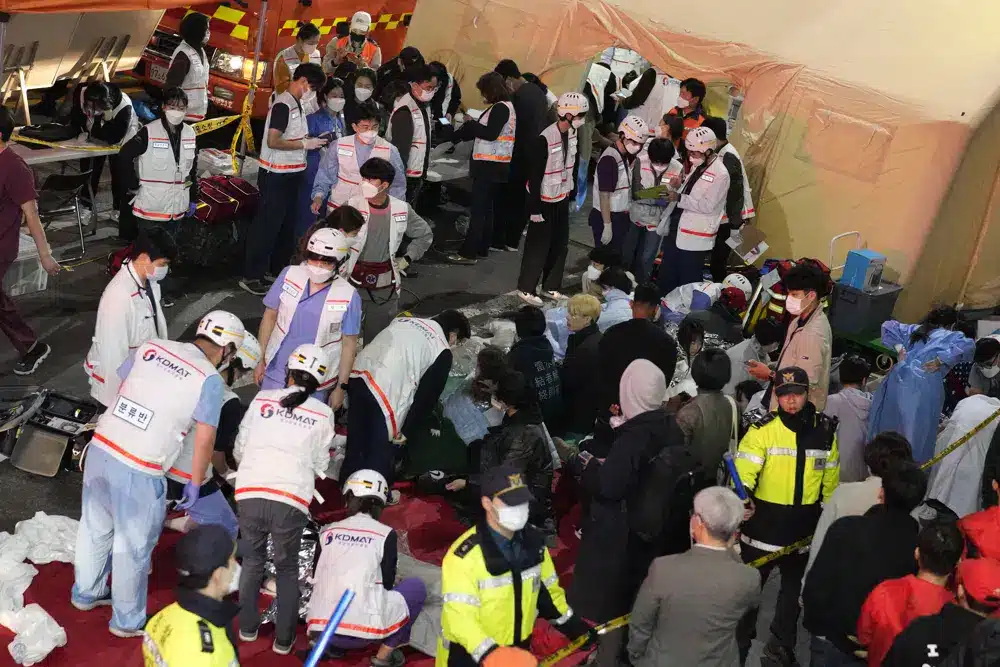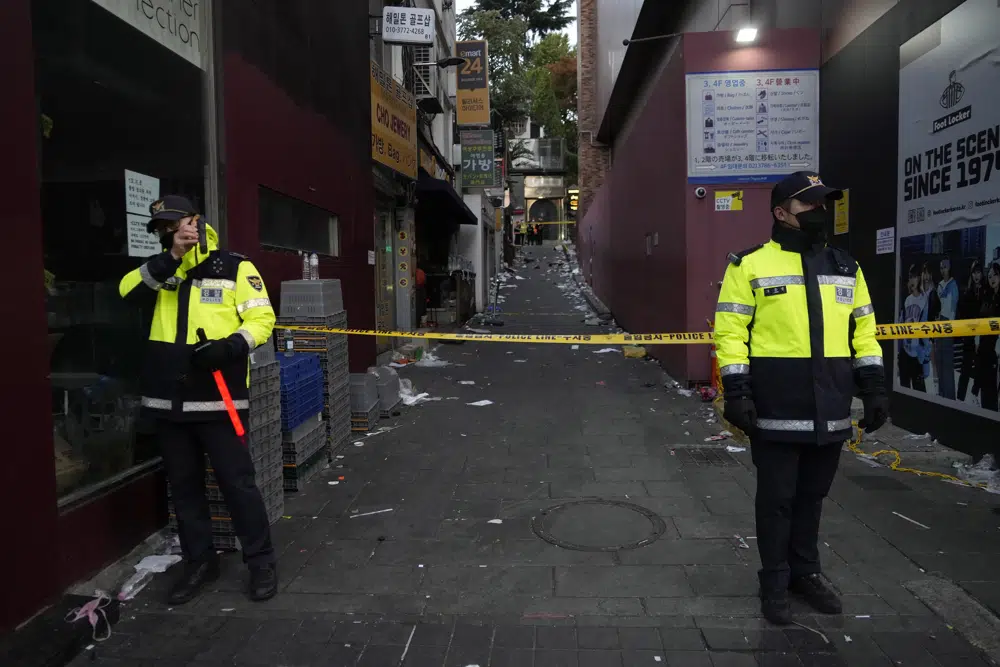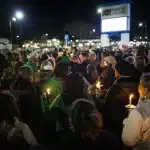South Korea’s SEOUL — South Korean police are pursuing criminal charges, including involuntary manslaughter and carelessness, against 23 officials, over half of whom are law enforcement officers, for lack of safety precautions blamed for a crowd surge that killed nearly 160 people.
Although Seoul police had sent 137 policemen to the capital’s nightlife neighborhood Itaewon on the day of the crush, even though a weekend crowd of more than 100,000 was expected, these cops were focused on monitoring narcotics usage and serious crimes, leaving minimal resources for pedestrian safety, according to experts.
Son Je-han, who led the National Police Agency’s special investigation into the event, announced Friday that his team would forward the issue to prosecutors. Park Hee-young, the mayor of Seoul’s Yongsan district, and Lee Im-jae, the area’s former police commander, are recommended for an indictment — two of the six arrested.
Korean Officers Arrived Late
Lee has also been accused of forging a police report to conceal his late arrival at the site. Two other police officers were detained on suspicion of attempting to destroy computer files and other potential evidence related to the accident.
Son’s 74-day police investigation mostly confirmed what was already clear: Yongsan police and public officials didn’t do enough to control the crowd for the expected number of Halloween partygoers, and they mostly ignored calls from pedestrians warning of a growing crowd hours before it turned deadly on Oct. 28.
Around 10 p.m., when people started falling over and getting crushed in a narrow lane full of partygoers, Son said, officials didn’t keep the scene under control well enough to let rescue workers get to the hurt.
“Among the overlapping failures that caused the high number of casualties were (their) inaccurate assessment of the situation, slow distribution of information about the situation, poor cooperation between related institutions, and delays in rescue operations,” Son said at a news conference in Seoul.
Became An Uncontrollable Wave
Son stated that his team interviewed roughly 540 persons and gathered 14,000 pieces of evidence from central government offices and transportation authorities. He said that police investigators looked at more than 180 video files taken by security cameras, journalists, and people walking by. They also sent forensic experts to the scene to figure out how many people were there.
Around 9 p.m., the crowd in the alley between the hotel and a dense row of businesses developed into an uncontrollable wave, with people unable to govern their progress once swept in. People began tumbling and collapsing on one another like dominoes around 10:15 p.m., resulting in the disaster that ended in 158 deaths and 196 injuries.
At about 10:15 p.m., there were about eight people per square meter (yard) in the alley, according to the National Forensic Service’s review of security camera footage and simulations. According to police, the density increased to eight to nine persons using the same space unit at 10:20 p.m. and nine to 11 people at 10:25 p.m.
Because the location was so densely packed, paramedics had difficulty getting to the incident. The enormous number of individuals lying motionless on the ground overwhelmed those who came, so they urged pedestrians to assist them in performing CPR. According to investigators, most deaths were caused by suffocation or brain damage.
Calls for Korean Government Accountability
It’s uncertain whether the findings of the police probe will be enough to quell popular outrage and calls for government accountability as the country deals with its greatest calamity in over a decade.
Opposition politicians and some victims’ families have demanded that high-profile figures such as Interior and Safety Minister Lee Sang-min and National Police Agency Commissioner, both of whom have faced calls to resign, be investigated.
On the other hand, Son stated that the special investigative team would terminate its investigations into the Interior and Safety Ministry, the National Police Agency, and the Seoul Metropolitan Government since it was difficult to show direct culpability.
Some experts have described the Itaewon crush as a “manmade disaster” that could have been avoided with relatively simple measures such as hiring more police and public workers to monitor bottleneck points, enforcing one-way walk lanes and blocking narrow pathways, or temporarily closing Itaewon’s subway station to prevent large crowds from moving in the same direction.
SOURCE – (AP)











